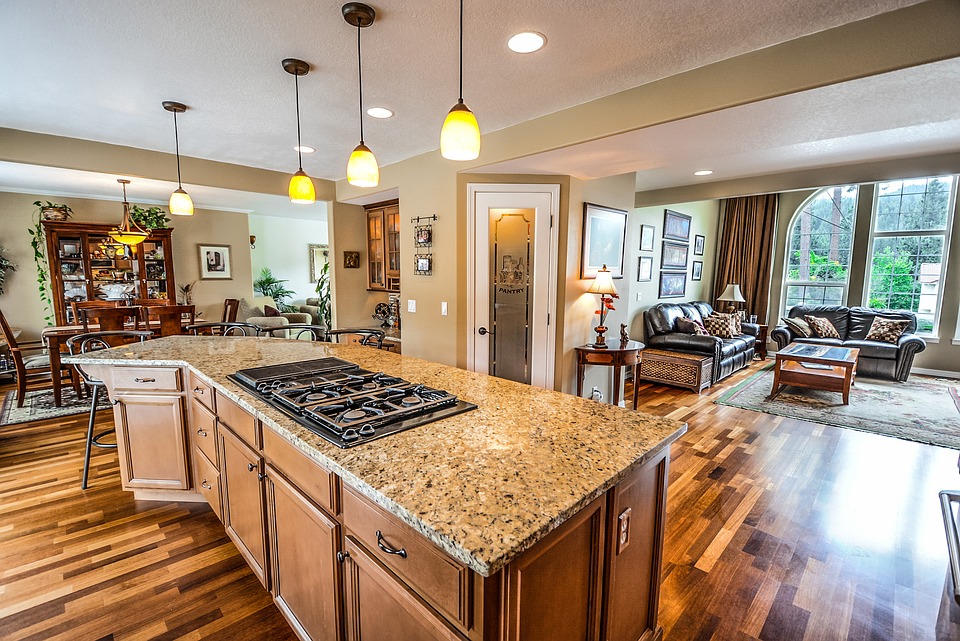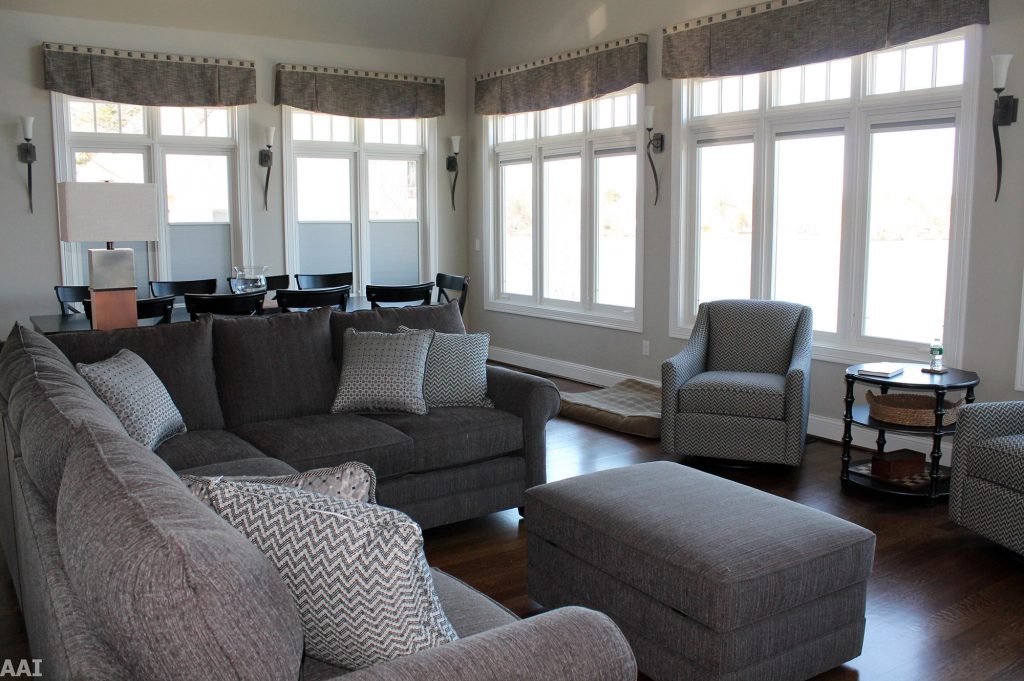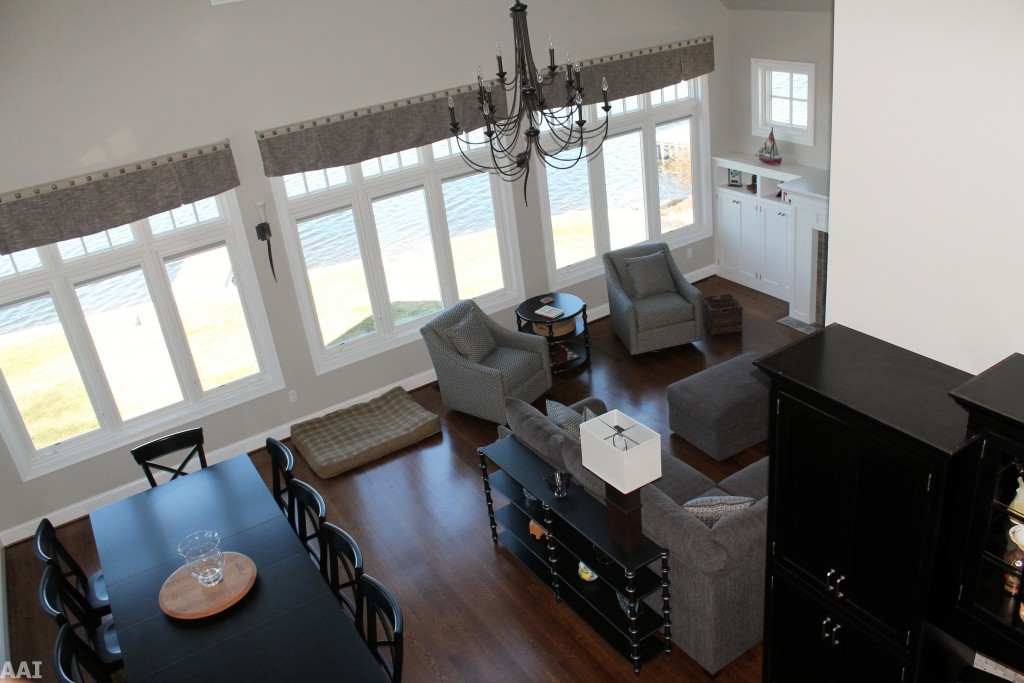An open plan living space is incredibly popular and have many advantages. They can maximise your space, without wasting precious area on walls, they can create a more social atmosphere, and they can look exceptionally trendy. However, they also come with challenges. It can be difficult to keep things separate and tidy for a start.

Image Source: https://pixabay.com/en/kitchen-home-real-estate-living-2486092/
If you are considering either buying a new home with an open plan area or knocking walls through to create your own open plan space, here are some fantastic tips to help you keep it stylish and trendy.
Separate with Furniture

All About Interiors
In an open plan living area, there will normally be three critical zones. The kitchen, the dining area and the living room. It’s important to try to keep these areas separate. One great way to do this is by using large pieces of furniture to divide the sections. A breakfast bar can signify the end of the kitchen, large dining furniture, such as a table and chairs will welcome guests into the dining area, then use the back of your sofa, or get a corner sofa, to separate off the living area. This makes it easy to keep the different zones tidy and organized.
Keep it cozy

All About Interiors
Open plan spaces are light and airy, they can look vast and cool, which is great in the summer. But, what about those dark winter nights when you want nothing more than to relax in your cozy and welcoming living room?
Use soft furnishing and wall hangings to keep the lounge area warm and comfortable; you can always put them away in the summer time. Other great ways to add warmth include painting main wall of the living area a darker color, having softer lighting options, so you don’t need to light the whole room, and lining the other walls in the area with book shelves and accessories. Try to make this part of your home as inviting as possible, to create a relaxing and warm atmosphere.
Create a Private Nook
You may also want to create a small, private nook. A reading corner perhaps. You could divide this off with a screen, add some comfy seating and all of your favorite decorations. This allows you to feel safe in a smaller space if ever you feel like you need an escape.
Use Color
A darker wall is great, but you could also add a color scheme to the whole room, to link the separate zones to each other. Choose a color, and gently run in through the area. In the living space, your cushions could be in this color, following through to perhaps a slightly different shade for your table runner in the dining room, then slightly different again for your cupboard doors, appliances or decorations in the kitchen. This is a really effective way of making sure everything is neat and matching yet still separate.
Use Careful Positioning
Think carefully about which zones should be next to each other. This largely depends on where you eat most of the meals. If you eat in the dining room, do you want to be carrying meals through the living room 3 times a day? But, if you prefer to eat at a breakfast bar or in the living room, you may want to put the dining room out on its own, as a place for games or study. Think carefully about your family’s needs and routine, as well as the size and shape of your furniture before committing to a decision.
Be Aware of Safety
When it comes to the safety of creating an open plan space, there are two main things to consider. Firstly, you’ll need to make sure you can knock through any walls you’d need to. If they are load bearing or supporting, this might not be an option for you. It’s a good idea to check with a contractor to be sure.
Secondly, do you plan on having children in the future? It’s much harder to childproof an open plan living space. Consider how you would block off any dangers.
Consider Heating
Another thing worth thinking about is the costs of heating one large open space. While making the living area cozy will help, you can’t shut a door to keep the heat in. Underfloor heating makes a great solution and can be very cost effective.
An open plan living space can be great. Just make sure you think about it carefully and get some help from a professional designer before you start knocking down any walls.
This post is a collaborative effort and may contain relative and relatable affiliate links. All opinions are our own and for informational purposes.

